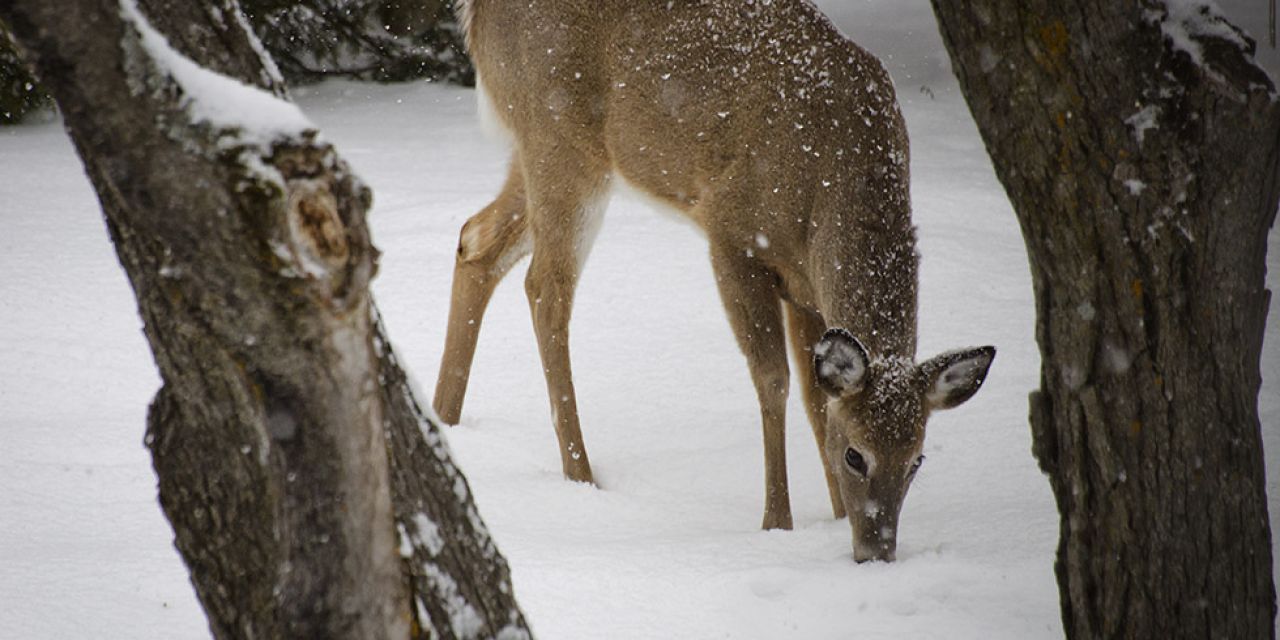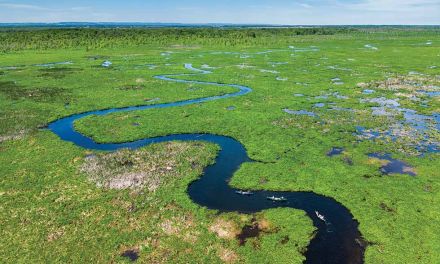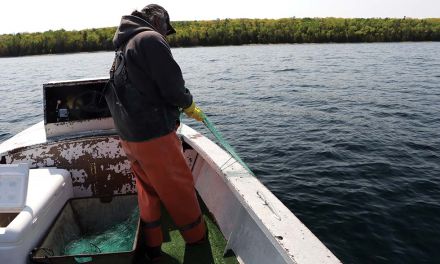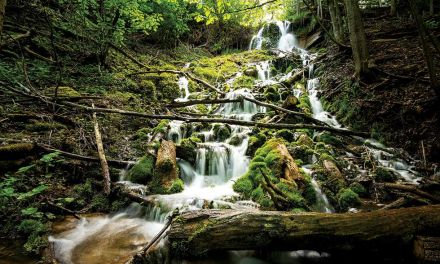THE WILD LIFE
by Marc Huminilowycz, photography by Clay Dolan
With stunning natural landscapes all around us, the snowy season provides an excellent chance to observe the abundance of wildlife that remains here throughout the winter—while also offering a helping hand if needed.
It’s another magical winter on the Escarpment, and Mother Nature has once again blanketed our region in its snowy embrace. As we enjoy the season on the slopes, on skis and snowshoes in our many parks and wilderness areas, and in cozy gatherings by the fire with friends and family, winter is also a good time for some quiet time in nature – observing, watching, and listening to what’s around us.
We are so fortunate to live in this beautiful part of Southern Ontario, which includes the Niagara Escarpment, home to over 300 species of birds, 55 mammals, 36 reptile and amphibian species, and 90 fish species. While some species of birds migrate and some animals hibernate or go into “torpor,” a state of lowered body temperature and metabolic activity, many are active here all winter long, foraging or hunting for food and sheltering from the elements.
Winter is really the best time to observe wildlife. Trees and shrubs devoid of leaves and a snowy white background are perfect for spotting animals and birds in our forests, parks, and fields. Closer to home, maintaining a bird feeder allows you to enjoy a large variety of species, including Chickadees, Blue Jays, Cardinals, Cedar Waxwings, various species of woodpeckers, Mourning Doves, Juncos, songbirds, and the occasional flock of Snow Buntings. (If you’re feeding birds, it’s vitally important that you consistently fill your feeder. Birds will rely on you during harsh winter days and nights. Equally important is keeping your feeder clean to prevent the spread of diseases.)
If you’re lucky, you might spot the occasional mammal, most likely white-tailed deer, but you don’t need to look far to observe evidence of wildlife activity. Hundreds of intersecting tracks in the snow, made by deer, coyotes, red foxes, cottontail rabbits, wild turkeys, porcupines, squirrels, birds, weasels, and occasionally bobcats and fishers, offer evidence of what’s going on out there.
In the treetops, you might hear the tapping of a woodpecker. In areas of new forest growth, it’s not unusual to see soft bark stripped from the bottoms of young trees. This is likely the work of porcupines, deer, or rabbits looking for an easy source of food. Look up in the trees, across fields, and in the sky for a glimpse of a Snowy Owl, a Northern Harrier, and other birds of prey, including magnificent bald eagles, which are confirmed to be breeding, nesting, and hunting throughout our region.

Clockwise: Ruffed Grouse, Snowy Owl, Wild Turkeys
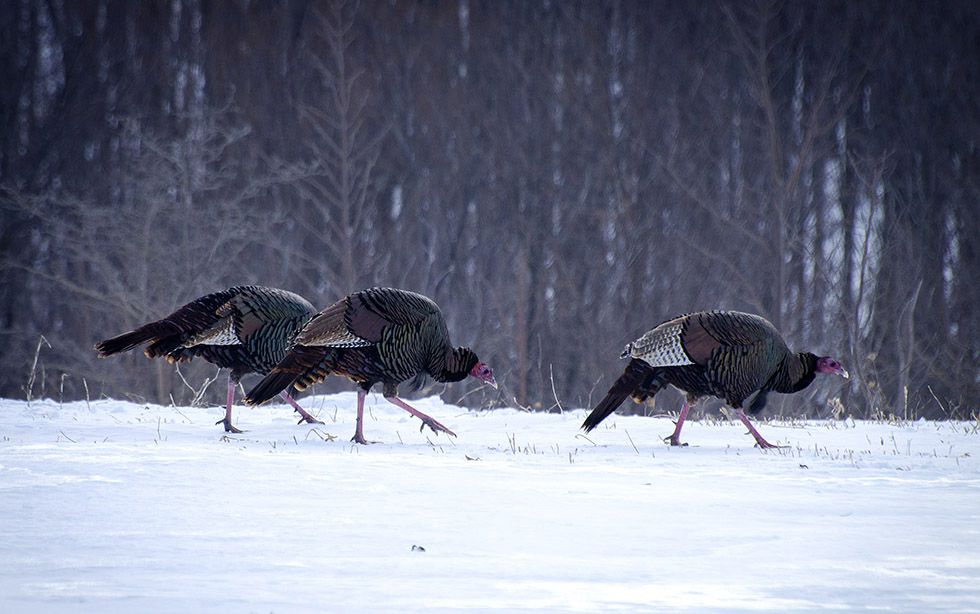

As you’re outside observing and listening, you might give some thought to how the wildlife with whom we share our environment are coping with the bitter cold and snow. Should you do something to feed or shelter them? Alexander (Sandy) Donald is the Director of Ontario Wildlife Rescue (OWR), which connects people who have found injured or orphaned wildlife with those who can look after them and get them back into the wild through a network of wildlife rescue centres across Ontario. The organization also helps raise money for these wildlife rescue centres, which don’t receive any government funds and are completely dependent on donations and public support. (See www.ontariowildliferescue.ca)
According to Sandy Donald, the best thing you can do for wildlife (other than maintaining bird feeders) is to leave them alone. “Animals and birds have a unique ability to adjust to their environment, and they know where to find food and shelter in the harshest weather,” he says. “Most wildlife doesn’t like being around humans, but if you feed them, they can lose their fear of people and become dependent on you. My advice is to leave them alone, and they will leave you alone.”
That said, Donald is concerned about the effect that climate change is having on the behaviour of wildlife. As an example, he notes Eastern Grey Squirrels, which have typically given birth to only one litter per year, in the spring, but five years ago started having a second litter. Now, it’s not unusual for these squirrels to have three litters per year, as late as October. Raccoons have followed the trend with litters in January.
“Young litters in late fall and the middle of winter have literally no chance of survival. We’re seeing a lot more of them in our wildlife rescue centres, where they will stay over the winter until next spring,” he says. Noting also that some birds aren’t migrating south anymore, Donald describes wildlife behaviour these days as “out of whack”. “Global warming, which has caused erratic weather with higher temperatures, longer summers and earlier warm/ cold springs, is disrupting the normal biological clocks of wild animals and birds, which are having to adapt to their changing environment,” he says.
“The weather is becoming more unpredictable. What’s ‘normal’ doesn’t exist anymore, and exceptions are starting to become the rule,” Donald adds. “There is now a higher chance of people encountering animals in the off-season as they stress to adapt to humans. Coyotes are becoming more commonplace, deer are more visible than ever, and raccoons are rampant in the cities.” An example of this is the erratic early spring behaviour of some animals, notably raccoons, which appear to be tamer than usual. “You can’t assume that they have rabies or distemper,” says Donald. “Leave them be. If they become a nuisance around your property, live trap them and release them in the wild at least a kilometre away.”
What about wildlife that has established itself for the winter in your attic or garage, or on your property? “Squirrels and chipmunks store food for the winter. If they’ve taken up winter residence in or around your home, don’t live trap and release them. They won’t survive without their food source. Leave them be until spring,” says Donald. “And under no circumstances should you set out poison traps outside you home. It’s illegal. The poison will harm other animals in the food chain, especially predators and scavengers.”
Wild animals and birds are a joy to have around us, and winter is a great time to observe them. Let’s all do our part to respect the wildlife that share our beautiful environment, and do whatever we can to help them. E
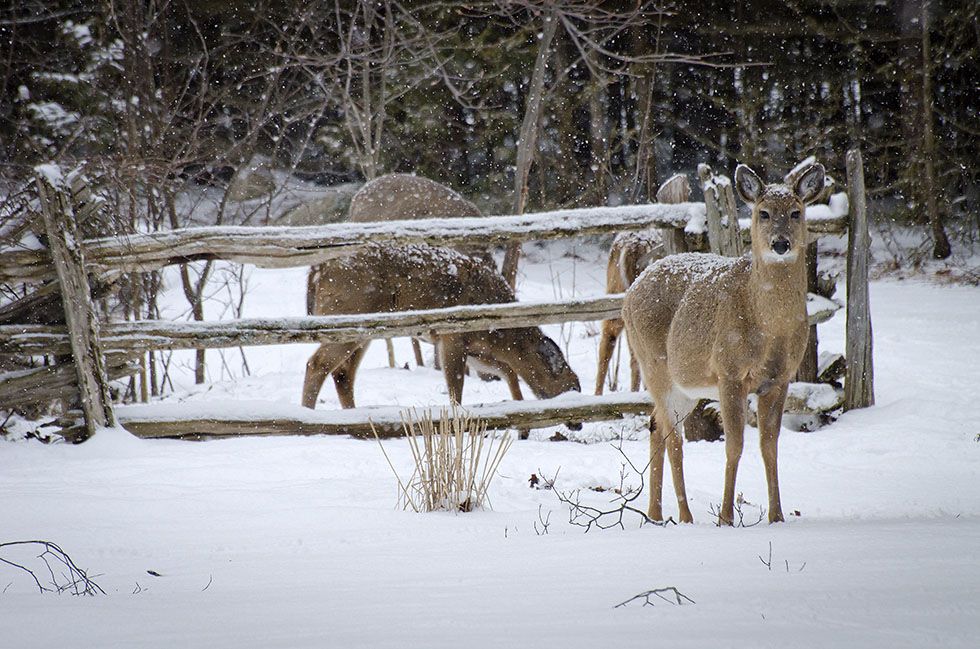
White-tailed deer
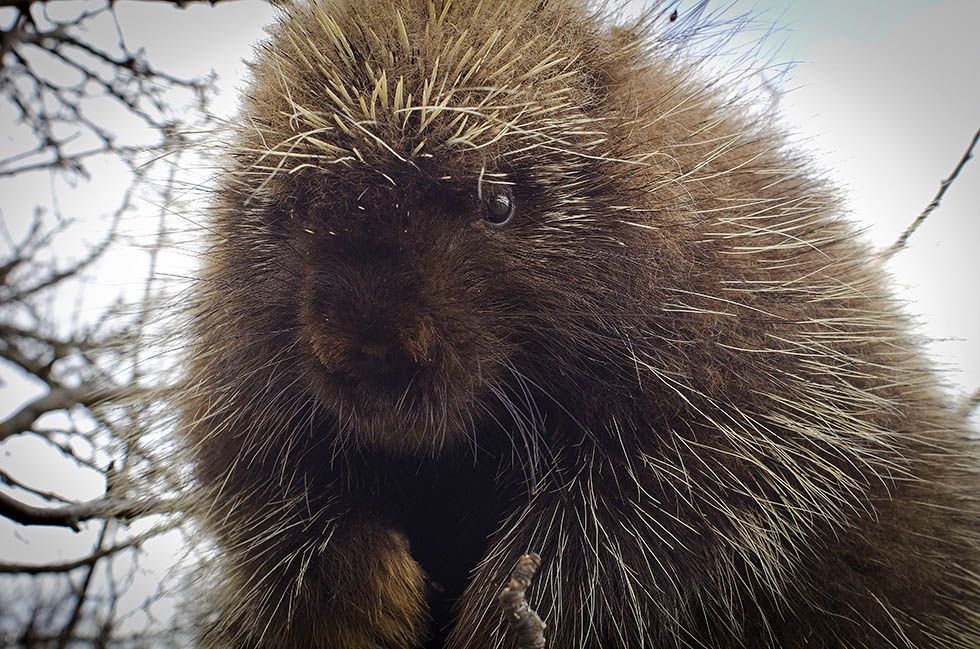
Porcupine
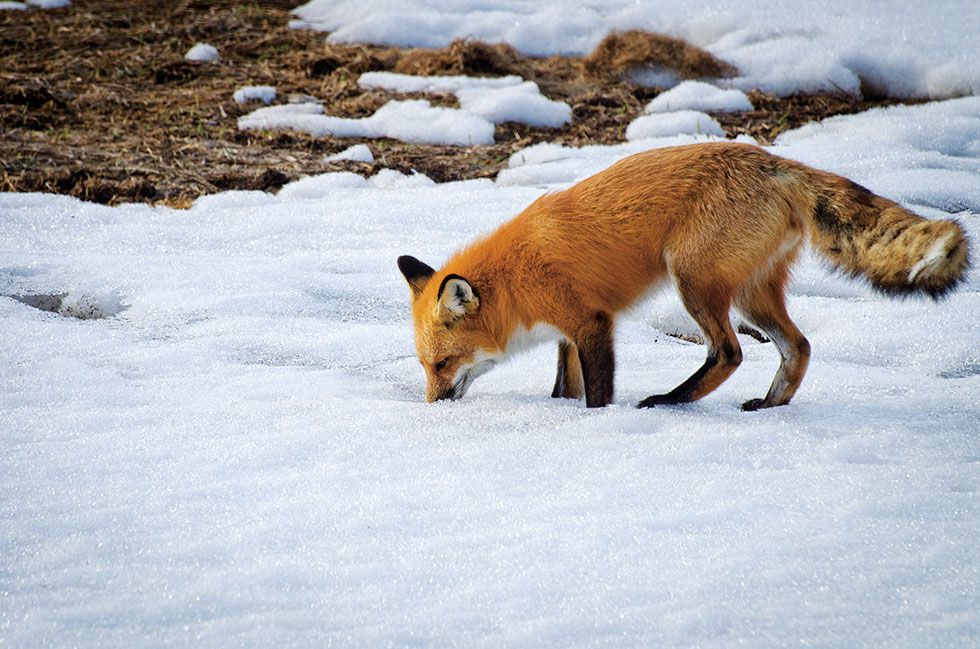
Fox
WHO YOU GONNA CALL?
According to Ontario Wildlife Rescue, the first 24 to 48 hours after a wild animal is found is the most critical because they’ve usually been without food or water for a while and are confused and afraid. Connecting with a wildlife professional quickly can save their life.
So, if you come across wildlife that is injured, sick, or in distress, who do you contact? Most local veterinary hospitals will not accept them, and local humane societies and animal control are not licensed to look after wildlife. Your best bet is to contact the nearest wildlife rescue centre. Even though our region is known for its natural beauty and abundance of wildlife, sadly there is not a single rescue centre in Grey or Bruce Counties. The nearest, Procyon Wildlife, is located in Beeton, Ontario, about 1 to 1-1/2 hours south of here. Their number is (905) 729-0033. (Website www.procyonwildlife.com) Further north in Muskoka is Aspen Valley Wildlife Sanctuary. They can be reached at (705) 732-6368. (Website www. aspenvalley.ca)
So, you’ve found a wild animal or bird in distress. What do you do? First, make the call to your nearest wildlife rescue centre. It will be up to you to capture the creature, as these places are not equipped or staffed to do so. According to Crystal Fay, Animal Care Manager at Procyon Wildlife, you should wear protective gloves, as you may be bitten out of fear. As gently as possible, place the animal in a large Rubbermaid-style storage bin with holes in the lid for air. You can offer a bit of water to an injured creature, but no food or water for an animal that appears ill. Monitor the animal regularly until you can transport it to the wildlife rescue centre.
Other than helping wildlife in distress, it’s best to leave wild animals and birds to deal with the winter weather. “Except for deer and birds, most mammals just sleep when it’s bitterly cold or stormy, waking up to feed when the weather warms up,” she says.
There are other ways you can help local wildlife. Donate via Ontario Wildlife Rescue to keep rescue centres in the province operating. According to Sandy Donald, Ontario is “desperately short” of wildlife sanctuaries and rehabilitation centres, and there are none in Grey or Bruce Counties. If you have the means, the land, and the desire to help animals and birds, consider becoming a “wildlife rehabber”, which will involve taking a (free) Ministry of Natural Resources exam. You might also consider becoming a foster parent for a local wildlife rescue centre. To donate or learn more about how you can become involved, visit www.ontariowildliferescue or email Sandy@ontariowildliferescue.ca.

